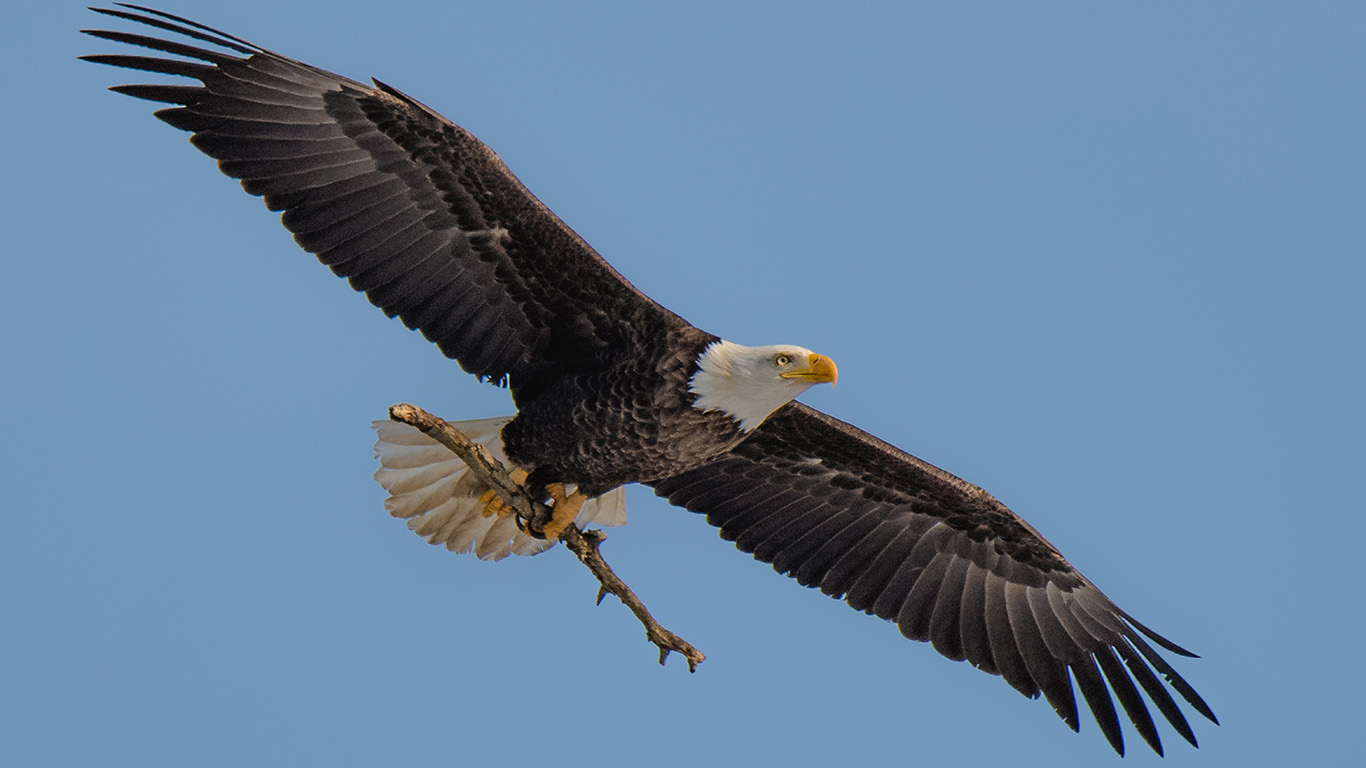Bald Eagles Soar Lake Erie's Skies
Make your way to Magee Marsh Wildlife Area in Ottawa County, Ohio, to discover a rich birding habitat filled with around 100 nests of some of the Midwest's most majestic creatures.

You don’t even have to get out of your car to see a bald eagle in Ohio’s Ottawa County. Just park in the large lot by the lake at the Magee Marsh Wildlife Area and look up to see two nests. And if you take Ohio state Route 2 into the area, you’ll see about 25 nests along the way.
Ottawa County has about 100 nests, the largest number of any county in the state, followed by Sandusky. Ohio has about 900 nests total. That number does not count birds that are too young to breed, which could number in the hundreds.
That’s a far cry from 1979 when only four breeding pairs were known in Ohio. “All indications showed those were the last bald eagles on the Great Lakes,” says Black Swamp Bird Observatory research director Mark Shieldcastle.
Shieldcastle, a legend among conservationists and birders, headed the Ohio Department of Natural Resources’ eagle recovery efforts until his retirement in 2009. Government protection, a fostering program for young birds and the elimination of DDT and other toxic pesticides helped bald eagles get back on their talons.
Eagle nests can weigh up to 500 to 1,000 pounds — and widespread logging of big trees destroyed many potential nesting spots. So Shieldcastle began a program to make nests for the birds.
“I have a lot of respect for the eagle,” he says. “It took our crew of five or six people all day to just get started on a nest.”
But Northwest Ohio, of course, is not the only place to see bald eagles on Lake Erie.
“You can see a bald eagle anywhere along the Lake Erie shoreline in western New York,” says Marcus Rosten, an environmentalist and educator for the Buffalo Ornithological Society, which offers eagle watches almost every Saturday.
The best place to spot them?
Strawberry Island, an uninhabited state park in the Niagara River owned by the New York State Office of Parks, Recreation and Historic Preservation. “The island is in the middle of the river, which helps keep them from being disturbed,” Rosten says, adding that Dunkirk Harbor and Sturgeon Point are also good places to eyeball eagles. “Today you can even see a bald eagle flying over the City of Buffalo. It’s the symbol of our country, our freedom.”
Shieldcastle said part of the eagles’ recovery around the Great Lakes has been their ability to adapt. Researchers have determined eagles do not need the exact conditions of a pristine marsh and now can nest even in people’s backyards.
Although no longer classified on the federal endangered species list, bald eagles are still under the federal Bald and Golden Eagle Protection Act.
But Shieldcastle also worries that, because the bald eagle is not being monitored as frequently as it was in decades past, “we could mess up again” and harm the birds with different hazards.
That list includes PCBs, which are banned carcinogenic chemical compounds still found in the food chain. In addition, avian influenza is a real threat. Last year, about 20 eagles in Ottawa County were lost to a new strain.
“But the population is going in the right direction and for the time seems secure,” says Shieldcastle, adding that the attention to the plight of the bald eagle also helped in the protection of other endangered or threatened animals including the Allegheny woodrat and the timber rattlesnake.
“Until you actually see a bald eagle, you don’t realize what this bird is really like — its size, the way it carries itself in the air or on the ground,” he says. “It catches people by surprise and they get mesmerized.”
Want more Lake Erie in your life? Subscribe to our free The Splash newsletter. It’s your guide to the best food, drinks, parks, beaches, shopping, festivals, music and more. Click here to subscribe.
Story:
Jill Sell
2023 July/August






